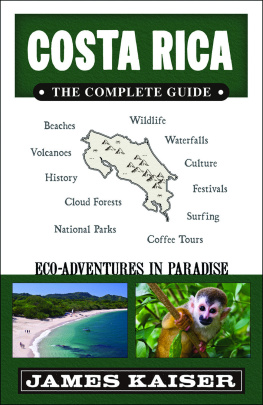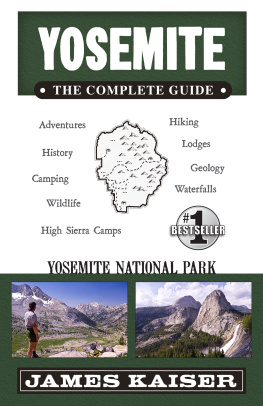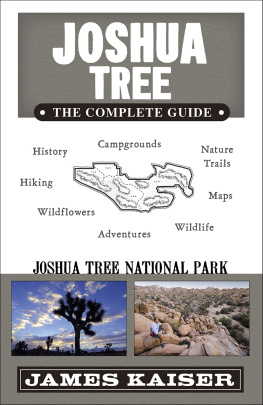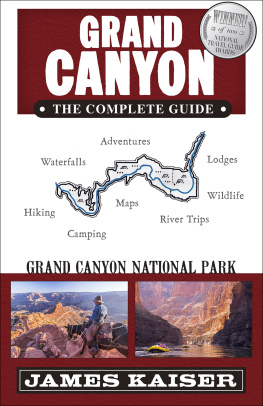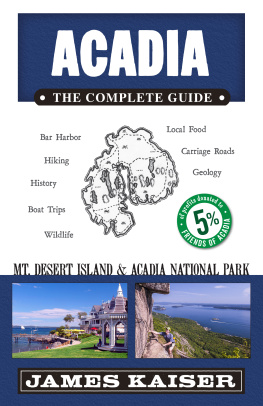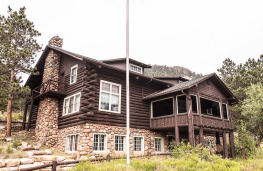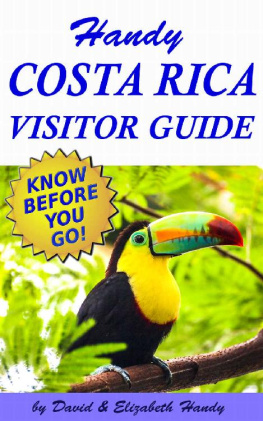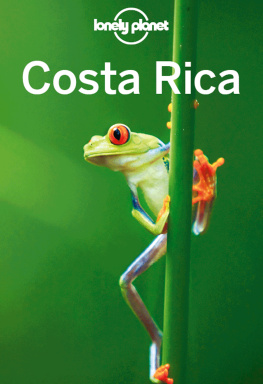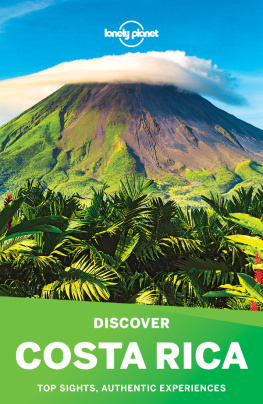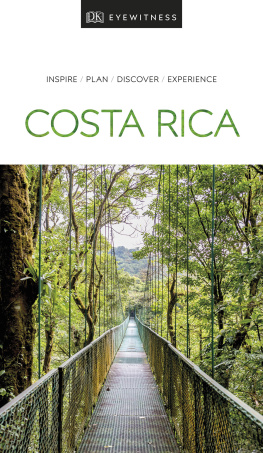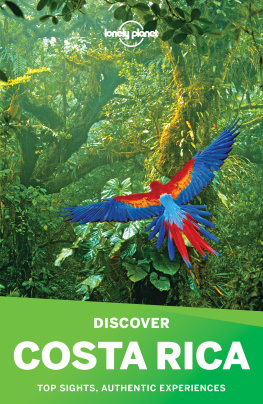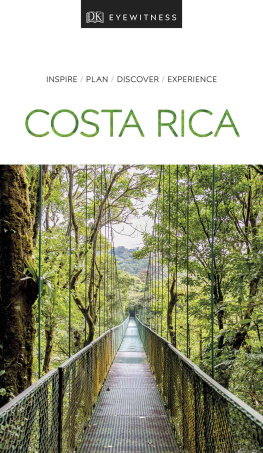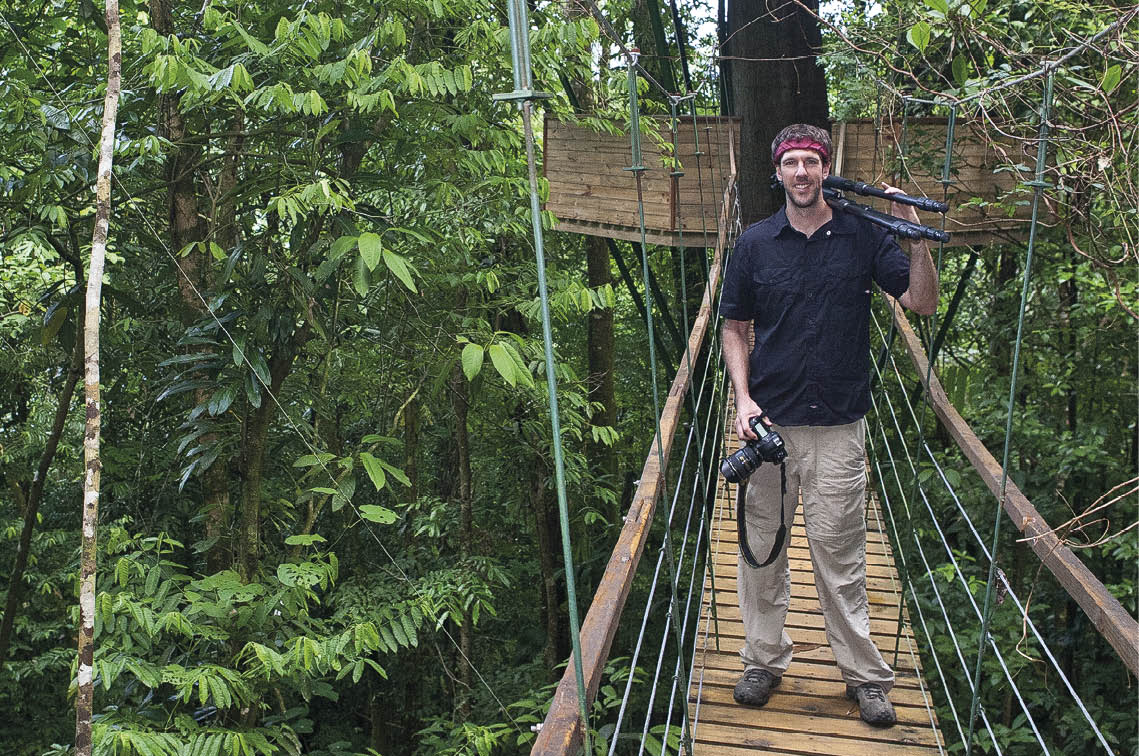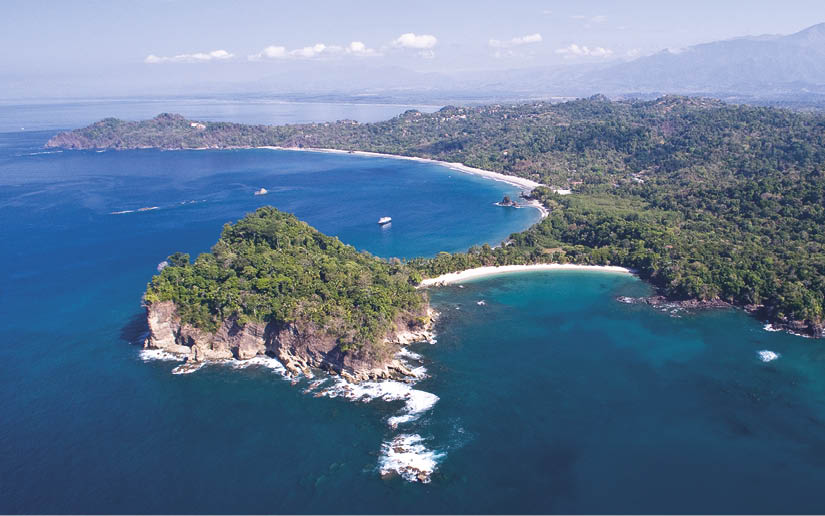Contents
Costa Rica: The Complete Guide
2015 Destination Press
Written & Photographed by James Kaiser
This book would not have been possible without the help of many generous people, among them David Boddiger, Steve Mack, Beto Font, Isabella Cota, Alex Leff, Bryan Beasley, Jessica Webb, Stacey Auch, Matt Levin, Clayton Norman, Ben Heneveld, Eli Carmichael, Scott Braman, Adam Preskill, Chip Braman, Barb Braman, Jim Thompson, Adrian Bonilla, Iraci Gaspar, Greg Loehmann, Kevin Castelo, Gibbs Henderson, Jay Tatum, Ryan Johnston, Kelly Born, John Silkey and Jenn Grinels. Special thanks to all of my Spanish teachers, particularly Yami, Pablo and Alejandra. Special thanks to Catherine Zusky and Polly Kaiser for their impressive editing skills, and a very special thanks to Andrea Rincn, a guardian angel without whom this book would not have been possible. As always, special thanks to all of my family and friends, who have always supported me, even when they shouldnt have.
Notice a Change? Although all information in this guide has been exhaustively researched, names, phone numbers and other details do change. If you encounter a change or mistake while using this guide, please send an email to . Your input will help make future editions of this guide even better!
Legal Disclaimer: Although every attempt has been made to ensure the accuracy of information contained within this guide, the author and publisher do not assume and disclaim any liability to any party for any loss or damage caused by errors or omissions. Information has been obtained from sources believed to be reliable, but its accuracy and completeness are not guaranteed. All maps in this guide are based on data believed to be reliable, but serious hikers should supplement their outings with detailed hiking maps. If the rigors and threats of nature are in any way beyond your capabilities, do not attempt any activity in this guide. Many photos in this book depict people in precarious situations. Do not assume that any situations depicted in this book are safe in any way.
Congratulations!
I f youve purchased this book, youre going to Costa Rica. Perhaps youre already here. If so, youre in one of the most extraordinary places on eartha tropical paradise overflowing with natural beauty and outdoor adventures. A country that covers less than 0.03% of earths surface area yet contains 5% of earths total biodiversity. A country that abolished its army and is one of the most prosperous and developed societies in Latin America.
So who am I, and why should you listen to me? My name is James Kaiser, and Im the author and photographer of this guide. I first visited Costa Rica in 2006 and immediately fell in love with the gorgeous scenery and friendly people. Having just finished a series of successful guidebooks to U.S. National Parks, I was looking for a new adventure. So after returning home I sold my possessions, packed my bags and hopped a one-way flight to Costa Rica.
This book is the culmination of years of research and exploration. Ive logged countless kilometers seeking out Costa Ricas best beaches, best adventures and best national parks. Along the way I learned Spanish, befriended dozens of locals and immersed myself in the culture. In this book I share my experiencesboth good and badto help you maximize your time to plan the ultimate Costa Rican vacation. Ive also included extensive background information about Costa Ricas history, culture and wildlife to help you better understand this remarkable country.
Although physically small, Costa Rica is home to an astonishing variety of landscapes. In a matter of hours, you can drive from a coastal jungle filled with monkeys to a chilly mountain eco-lodge where clouds drift through the trees. There are coffee farms, active volcanoes and incredible waterfalls. There are white sand beaches home to world-class surf breaks and black sand beaches where nesting sea turtles gather by the thousands. And no matter where you go in Costa Rica, the wildlife is off the charts.
You could easily spend a year exploring Costa Rica and not run out of things to do. But if youre like most people, youve only got a week or two. Make that time count! To get the most out of your vacation, youve got to plan your trip wisely. This guidebook puts the best of Costa Rica at your fingertips, helping you maximize your time for an unforgettable vacation.
Now let me show you the best that Costa Rica has to offer!
Introduction
C osta Rica is a tiny country with big attributes: the most peaceful country in Central America, the most democratic country in Latin America and one of the most biodiverse places on earth. The countrys name, Rich Coast, was given by early Spanish explorers who assumed Costa Rica was filled with gold. In reality there was little gold to be found, but the country is home to something even more precious: stunning natural beauty.
Located just north of Panama and just south of Nicaragua, Costa Rica occupies one of natures most incredible pieces of real estate. Like the rest of Central America, Costa Rica is sandwiched between two continents and two oceans, attracting an amazing diversity of plants and animals from each ecosystem. But even within Central America, Costa Ricas biodiversity is impressive. Its Pacific Coast is the transition zone between the tropical dry forests of the north and the tropical rainforests of the south. Meanwhile a string of mountains runs through the center of the country, sheltering cool cloud forests and freezing pramos.
This varied geography supports an astonishing range of flora and fauna. All told, Costa Rica is home to roughly 5% of the worlds biodiversity, including nearly 8% of the worlds bird species, 10% of the worlds butterfly species, 10% of the worlds bat species and 20% of the worlds hummingbird species. Even more impressive, all this natural wonder is packed into a country just 300 km (186 miles) long by 120 km (75 miles) wide, about half the size of Ohio. No other area of comparable size in the Western Hemisphere contains so much biodiversity.
The people of Costa Rica, who call themselves Ticos, are the proud stewards of this natural heritage. In contrast to the rest of Central America, which suffered a series of ruthless dictators and bloody civil wars throughout the 20th century, Costa Rica is a stable democracy that abolished its army in 1949 and invested in its people. Today its citizens are among the most educated and prosperous in Latin America. They are also among the most environmentally conscious. Ticos have set aside over 25% of their country as national parks or preserves, and ecotourism is a major part of the economy. As such, Costa Rica has become a powerful role model for other developing countries, demonstrating that environmentalism and economic growth can go hand in hand.

